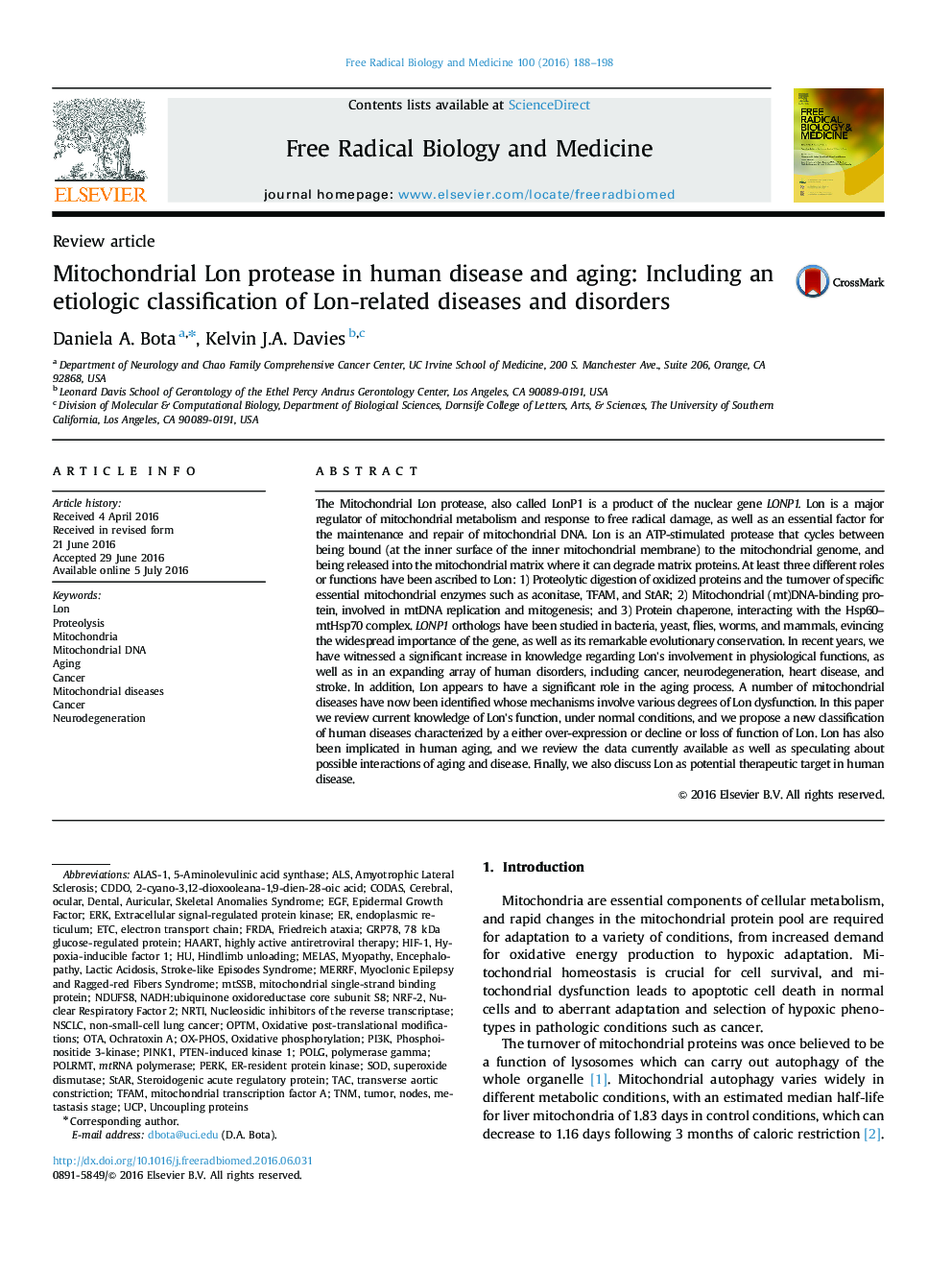| کد مقاله | کد نشریه | سال انتشار | مقاله انگلیسی | نسخه تمام متن |
|---|---|---|---|---|
| 5501922 | 1534943 | 2016 | 11 صفحه PDF | دانلود رایگان |

- LonP1 is a major regulator of mitochondrial metabolism and mtDNA maintenance.
- LonP1 is a mitochondrial protease, chaperon and mtDNA-binding protein.
- LonP1 is crucial for normal human development.
- LonP1 is involved in many diseases, including cancer, neurodegeneration and heart disease.
- LonP1 appears to have a significant role in the aging process.
The Mitochondrial Lon protease, also called LonP1 is a product of the nuclear gene LONP1. Lon is a major regulator of mitochondrial metabolism and response to free radical damage, as well as an essential factor for the maintenance and repair of mitochondrial DNA. Lon is an ATP-stimulated protease that cycles between being bound (at the inner surface of the inner mitochondrial membrane) to the mitochondrial genome, and being released into the mitochondrial matrix where it can degrade matrix proteins. At least three different roles or functions have been ascribed to Lon: 1) Proteolytic digestion of oxidized proteins and the turnover of specific essential mitochondrial enzymes such as aconitase, TFAM, and StAR; 2) Mitochondrial (mt)DNA-binding protein, involved in mtDNA replication and mitogenesis; and 3) Protein chaperone, interacting with the Hsp60-mtHsp70 complex. LONP1 orthologs have been studied in bacteria, yeast, flies, worms, and mammals, evincing the widespread importance of the gene, as well as its remarkable evolutionary conservation. In recent years, we have witnessed a significant increase in knowledge regarding Lon's involvement in physiological functions, as well as in an expanding array of human disorders, including cancer, neurodegeneration, heart disease, and stroke. In addition, Lon appears to have a significant role in the aging process. A number of mitochondrial diseases have now been identified whose mechanisms involve various degrees of Lon dysfunction. In this paper we review current knowledge of Lon's function, under normal conditions, and we propose a new classification of human diseases characterized by a either over-expression or decline or loss of function of Lon. Lon has also been implicated in human aging, and we review the data currently available as well as speculating about possible interactions of aging and disease. Finally, we also discuss Lon as potential therapeutic target in human disease.
162
Journal: Free Radical Biology and Medicine - Volume 100, November 2016, Pages 188-198